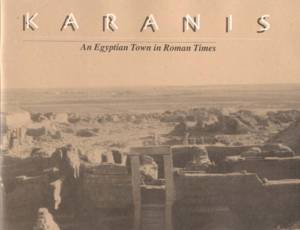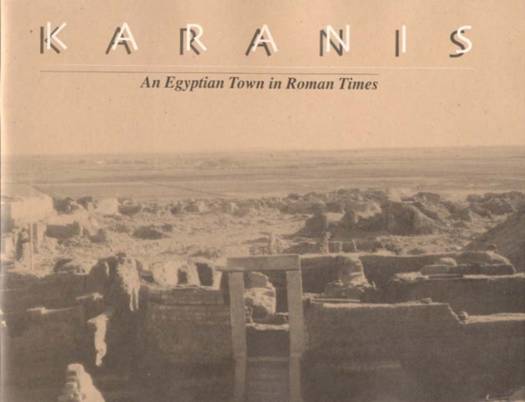
Door een staking bij bpost kan je online bestelling op dit moment iets langer onderweg zijn dan voorzien. Dringend iets nodig? Onze winkels ontvangen jou met open armen!
- Afhalen na 1 uur in een winkel met voorraad
- Gratis thuislevering in België vanaf € 30
- Ruim aanbod met 7 miljoen producten
Door een staking bij bpost kan je online bestelling op dit moment iets langer onderweg zijn dan voorzien. Dringend iets nodig? Onze winkels ontvangen jou met open armen!
- Afhalen na 1 uur in een winkel met voorraad
- Gratis thuislevering in België vanaf € 30
- Ruim aanbod met 7 miljoen producten
Zoeken
Karanis, an Egyptian Town in Roman Times
Discoveries of the University of Michigan Expedition to Egypt (1924-1935)
Elaine K Gazda
€ 12,95
+ 25 punten
Omschrijving
Karanis, a town in Egypt's Fayum region founded around 250 BC, housed a farming community with a diverse population and a complex material culture that lasted for hundreds of years. Ultimately abandoned and partly covered by the encroaching desert, Karanis eventually proved to be an extraordinarily rich archaeological site, yielding tens of thousands of artifacts and texts on papyrus that provide a wealth of information about daily life in the Roman-period Egyptian town. This volume tells of the history and culture of Karanis, and also provides a useful introduction to the University of Michigan's excavations between 1924 and 1935 and to the artifacts, archival records and photographs of the excavation that now form one of the major components of the collection of the Kelsey Museum of Archaeology.
Specificaties
Betrokkenen
- Auteur(s):
- Uitgeverij:
Inhoud
- Aantal bladzijden:
- 50
- Taal:
- Engels
- Reeks:
- Reeksnummer:
- nr. 1
Eigenschappen
- Productcode (EAN):
- 9780974187303
- Verschijningsdatum:
- 31/12/2004
- Uitvoering:
- Paperback
- Formaat:
- Trade paperback (VS)
- Afmetingen:
- 280 mm x 215 mm
- Gewicht:
- 240 g

Alleen bij Standaard Boekhandel
+ 25 punten op je klantenkaart van Standaard Boekhandel
Beoordelingen
We publiceren alleen reviews die voldoen aan de voorwaarden voor reviews. Bekijk onze voorwaarden voor reviews.











